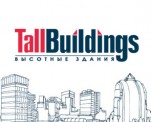From Profanation to Realization

The problem of monitoring load-bearing structures of unique buildings at construction and operational stages is becoming particularly important, which has already been admitted by designers, builders and supervisory authorities (see the article in the previous issue). However we haven’t reached consensus on this matter or worked out a solution algorithm yet. It’s no secret, although quite sad, that today the system of monitoring of many already erected unique buildings exists only on paper, approved by state expert assessment department.
There are four methods of instrumental monitoring: geodetic measurements; engineering-geological monitoring of the base soil mass condition; measurements of loads and strains in the foundation structures and superstructure; dynamic (hereinafter marked by the author) (another variant – seismometric). Special attention should be paid to seismometric method, which makes it possible to inspect the building in whole and find significant changes in the load-bearing structures without instrumental impact on and visual examination of each structure. Experiments carried out on real buildings confirmed the potential of this method, at the same time revealing a number of problems.
Most recent regulatory requirements of GOST Р 53778-2010, instructing that values (of a period and logarithmic decrement) of natural vibrations principle tone «along the three zerotwist axes of the building» should be recorded, do not promote understanding of the essence, possibilities and limitations of dynamic monitoring.
We should point out the specificity of unique buildings, which is getting increasingly complex, and the advantages of the seismometric method in the context of the monitoring problem: high dimension and variability (for example, in loads, masses and stiffness) of a building together with the complexity of their visual-instrumental evaluation (direct access to most loadbearing structures in residential, office and other facilities is either hindered or impossible).
Full content of this issue you can read here
The full version of the article can be read in our printed issue, also you can subscribe to the web-version of the magazine
 Text: ALEXANDER BELOSTOTSKY, Director General of Stadyo R&D, the Head of REC CM MGSU,
Text: ALEXANDER BELOSTOTSKY, Director General of Stadyo R&D, the Head of REC CM MGSU,
Associate member of RAASN, D.Sc. in Engineering, Professor


